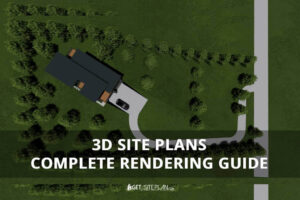
3D Site Plans – Complete Rendering Guide
Before a single foundation is poured or a wall takes shape, every construction project begins with one thing – a plan. But while traditional blueprints show dimensions, 3D site plans
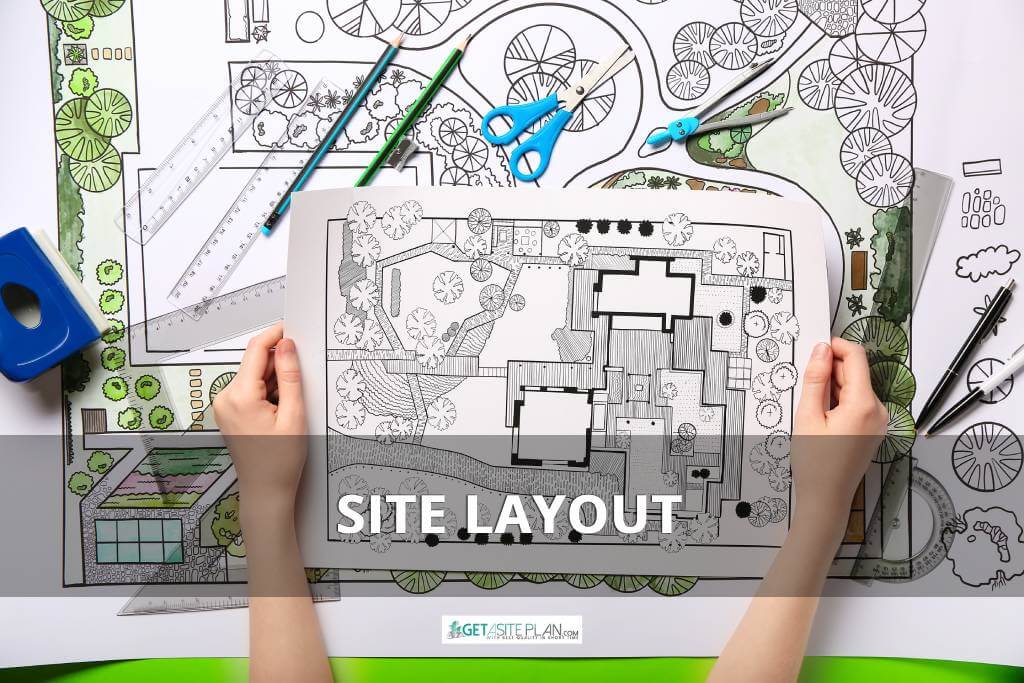

Contributing Writer | Architecture & Design Writer
Before any construction begins, careful site planning and layout are essential.
Site layout involves determining the efficient arrangement of buildings, infrastructure placement, and landscaping within a given area. After it’s done, the site layout is translated into a site layout plan, a detailed drawing that guides the entire project.
This article will explain the key concepts of site layout, explore the creation of site layout plans, and highlight the importance of strategic planning for successful projects.
Table of Contents
Toggle
Site layout is the art and science of organizing the spatial relationships between various elements within a land area.
It’s about more than just placing buildings; it involves considering the interaction between structures, open spaces, infrastructure, and the surrounding environment.
Effective site layout aims to create a functional, safe, and aesthetically pleasing structure that meets the specific needs of the project and its users.
Several key principles guide successful site layout, ensuring that the project meets its goals and creates a positive impact.
These principles are:
Guidelines like the City of Lewiston’s Site Plan Review and Design Guidelines stress optimizing building placement, circulation, and sustainable landscaping [1].
Incorporating all these principles into your design ensures that every element of the site contributes to its purpose.
Site layout serves several critical purposes in the planning and development process, making it one of the most important aspects of a successful project.
The purpose encompasses the following:
By focusing on these objectives, a carefully crafted site layout plan becomes the guiding framework, bridging the vision of a project with the practicalities of its construction.

A site layout plan is a detailed, scaled drawing visually representing the proposed site layout.
It serves as a blueprint for the construction process, providing a clear and concise visual guide for all stakeholders involved in the project.
Designers create structured site layout plans that map out boundaries and outline infrastructure zones to guide development. The typical site layout plan accurately depicts the arrangement of buildings, infrastructure, landscaping, and other key features within the site boundaries.
A well-structured site layout plan guarantees alignment with the project’s specific goals, so it is essential to understand how to create one effectively.

Effective site layout planning ensures that space is used efficiently, aligns with project goals, and complies with relevant regulations.
Creating a site layout plan requires assessing site conditions, considering zoning and regulatory constraints, and strategically arranging elements to maximize efficiency and usability.
It involves a series of well-defined steps:
With a detailed and structured plan in place, attention then turns to the key elements and considerations that ensure an efficient and cohesive site layout.
The main elements of a site layout transform design principles into practical components, ensuring the site is both functional and sustainable.
These elements include:
These elements serve as the foundation for a well-structured site layout, all of which must be carefully considered when creating a site layout plan.

For basic projects, consider using simple drafting techniques and tools to create a preliminary site layout plan.
Here are the steps to help you create a simple site layout plan:
You can draft it by hand, use specialized software, or hire professionals, such as surveyors or online drawing services, for a more innovative approach.
Using the best drafting software for site plans and similar layouts allows you to create precise, professional designs with greater efficiency and accuracy.
However, mastering these tools often requires significant time and effort, and the learning curve can be frustrating if you’re not experienced in drafting or design.
Working with skilled professionals, such as architects or civil engineers, ensures you receive a detailed and accurate site layout plan with minimal need for revisions.
However, their expertise comes at a premium, so be prepared for higher costs reflecting their experience and the quality of their work.
For those seeking a cost-effective and efficient solution, utilizing a professional redraw service like GetASitePlan can be a valuable option.
Their main services focus on online site plans, which are closely related to site layout plans and can be highly useful for these purposes. Additionally, they have the expertise and tools to create innovative, scalable designs for potential future expansions, all with a quick turnaround.
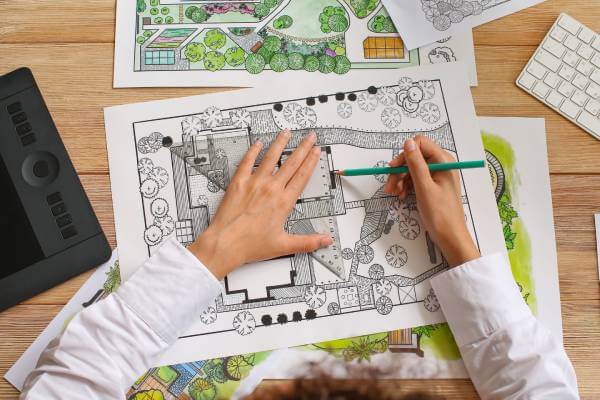
A proper design of the site layout plan is utterly important for getting a functional site which spares you unnecessary work and expenses.
Below are the finely designed site layout plans to help you understand the best practices or gain inspiration.
VIŠE SLIKA POTREBNO – Potrebna druga slika umesto ove – zatražiti (više slika primera land survey)
Exploring examples of site layout plans provides valuable insights into the distinctions and applications of these essential planning tools.
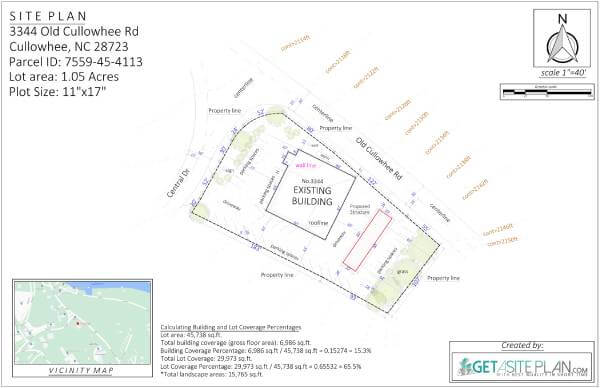
Even though the site layout and site plan share similar features, they aren’t the same.
A site layout focuses on the conceptual arrangement of elements, serving as the foundation for the site layout plan, translating these ideas into a technical and visual guide.
The site plan, however, takes things further, transforming the layout into a detailed, scaled document that meets legal, regulatory, and construction requirements.
While the site layout plan provides a bridge between design and implementation, the site plan ensures the project is ready for approvals and execution.
Together, they streamline the process from concept to construction.
To maximize efficiency, begin with a detailed site layout to explore design ideas and address functional needs.
Once finalized, use the site layout plan as the starting point for creating a site plan sketch.
Ensure the final site plan aligns with zoning requirements and building codes while reflecting the core concepts established during the layout phase.
Combining creativity with precision ensures a compliant project.
A well-thought-out site layout lays the foundation for a successful project.
By translating the conceptual arrangement into a precise site layout plan, you create a roadmap that guides every stage of development.
With strategic planning and execution, your efforts are more likely to result in a functional, efficient, and visually appealing outcome that meets all project goals.
In essence, a carefully planned layout of the site ensures that your investment of time, resources, and creativity will truly pay off.
Reference:
https://www.lewistonmaine.gov/DocumentCenter/View/306/Site-Plan-Review-and-Guidelines
Learn more about our contributor:

Contributing Writer | Architecture & Design Writer
During my career, I’ve written articles on interior design, home remodeling, and renovation with an emphasis on money-saving tips and DIY ideas. It’s been a rewarding journey and I am thrilled to continue helping others bring their architectural visions to life.

Before a single foundation is poured or a wall takes shape, every construction project begins with one thing – a plan. But while traditional blueprints show dimensions, 3D site plans

Many homeowners start landscaping projects without realizing some require permits. A landscape permit helps ensure compliance with local codes, protects the environment, and prevents drainage or structural problems. Whether you
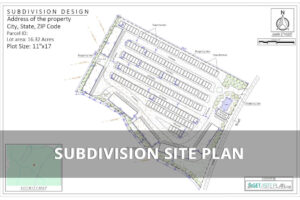
Picture standing over a blueprint that shows the future of your land – where roads will curve, how each lot will breathe, where every pipe, fence, and tree will fit.